Accelerator timeline
- 1927
- 1928
- 1931
- 1932
- 1933
- 1934
- 1936
- 1937
- 1939
- 1940
- 1942
- 1943
- 1945
- 1946
- 1947
- 1949
- 1950
- 1952
- 1953
- 1954
- 1955
- 1956
- 1957
- 1959
- 1960
- 1962
- 1966
- 1967
- 1968
- 1971
- 1974
- 1976
- 1977
- 1978
- 1979
- 1981
- 1987
- 1989
- 1990
- 1995
- 2000
- 2008
- 2009
- 2010
- 2011
- 2012
-

A series of drift tubes in Linac Portion of the Spallation Neutron Source (SNS) at Oakridge National Laboratory. Drift tubes were used by Wideroe in his 1927 Linac and are still used in Linacs today. (Credit: Oakridge National Laboratory)
1927
A young Norwegian engineer, Rolf Wideroe, uses an alternating current (AC) voltage for a linear accelerator consisting of drift tubes and gaps for his PhD thesis.
-
1928
Rolf Wideroe states the Betatron principle in a published paper.
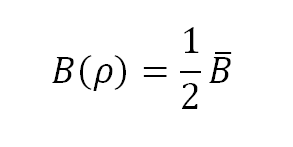
The principle behind the betatron shows that the radial magnetic field of a particle is half of the average magnetic field across the accelerator.
-
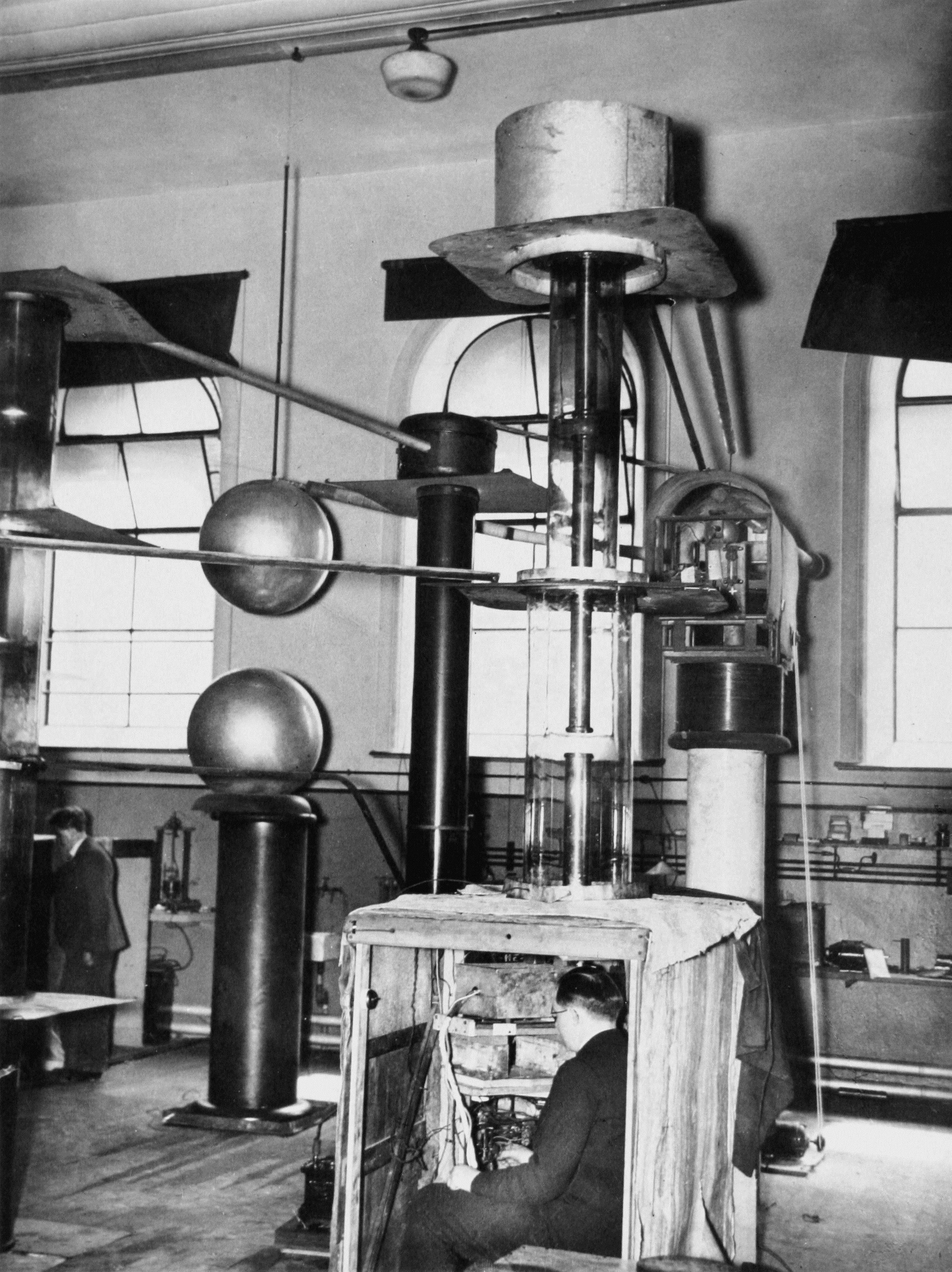
Cockcroft and Walton's accelerator at the Cavendish Laboratory, Oxford (Credit: Cavendish Laboratory)
1931
John Cockcroft and Ernest Walton, develop their particle accelerator in Cavendish Labs, developing the Cockcroft-Walton generator to supply the high voltage in the process. David Sloan develops a linear accelerator capable of accelerating Mercury ions to 1.25 MeV, inspired by Wideroe's accelerator. Ernest Lawrence comes up for the idea of the Cyclotron accelerator and with the help of Milton Livingston, builds the first Cyclotron which was capable of accelerating protons first to 80 keV then later, with modification, to 1.1 MeV.
-
1932
Robert Van de Graaff develops his particle accelerator using a high voltage generator, also developed by Van de Graaff, called the Van de Graaff generator. Cockcroft & Walton disintegrate an atomic nucleus using their Cockcroft - Walton accelerator. Lawrence & Milton Livingston using magnetic focusing in their Cyclotron accelerate a particle to 1.22 MeV and in response to Cockcroft & Walton's work disintegrate an atomic nucleus a few weeks later.

John Cockcroft (left), Ernest Walton (right) and Ernest Rutherford (centre) (Credit: Cavendish Laboratory, University of Oxford)
-
1933
A Van de Graaff accelerator is built capable of accelerating hydrogen ions to 0.6 MeV.
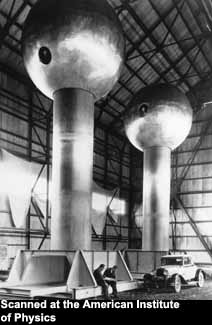
The Van de Graaff accelerator at The Carniglie Institute, capable of accelerating hydrogen ions to 0.6 MeV (Credit: AIP)
-
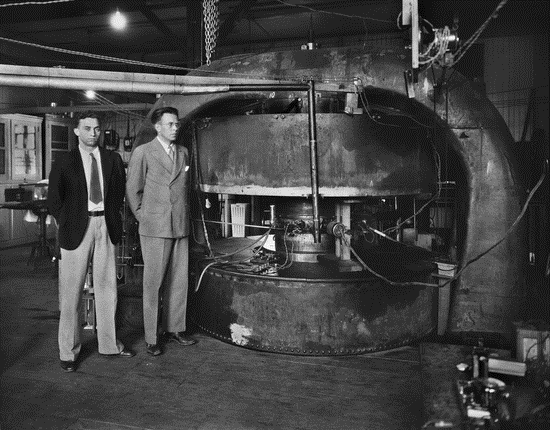
Lawrence and Livingston standing beside their 27" cyclotron (Credit: Lawrence Berkeley National Laboratory)
1934
Taking advantage of the development of new electromagnets and the availability of deuterium, Lawrence & Livingston accelerate deuterium ions to 5 MeV.
-
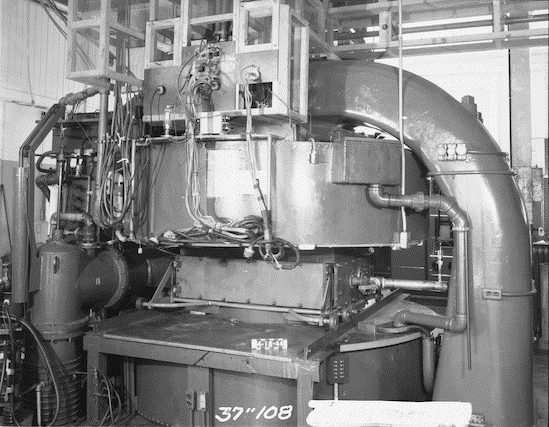
Lawrence and Livingston's 37" Cyclotron (Credit: Lawrence Berkeley National Laboratory)
1936
Using a larger electromagnet, Lawrence & Livingston accelerate deuterium ions to 8 MeV.
-
1937
Hans Bethe & Morris Rose state the relativistic limitations of the Cyclotron, that the maximum energy achievable in a Cyclotron is 25 MeV.
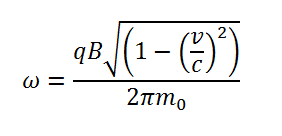
The relativistic orbital frequency of a particle in a cyclotron depends on the velocity v of the particle, meaning that as the particle accelerates, it slowly drops out of sync with the AC voltage.
-
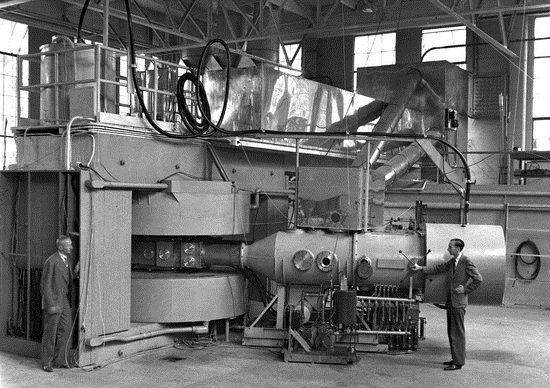
Lawrence and Livingston's 60" Cyclotron (Credit: Lawrence Berkeley National Laboratory)
1939
Increasing the size of their Cyclotron from 37 inches to 60 inches, Lawrence & Livingston accelerate deuterium ions to 20 MeV.
-
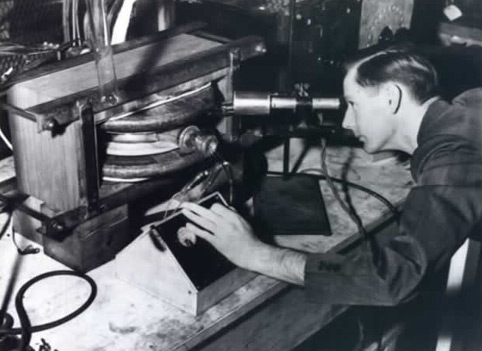
Donald Kerst with his first Betatron (Credit: University of Illinois)
1940
Donald Kerst builds the first accelerator taking advantage of the Betatron principle, the Betatron, which accelerates electrons to 2.3 MeV.
-
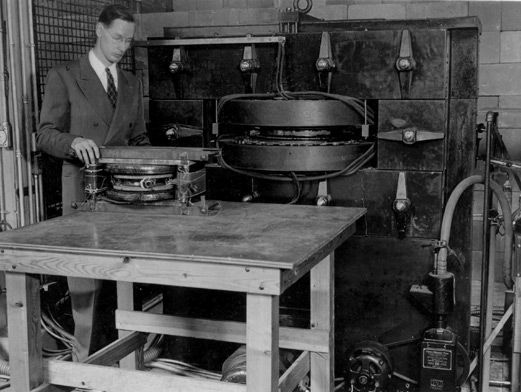
Kerst with his first betatron (table) and his larger 20 MeV betatron (behind) (Credit: University of Illinois)
1942
Donald Kerst builds a Betatron capable of accelerating electrons to 20 MeV and later a second Betatron capable of accelerating electrons to 80 MeV.
-
1943
Wideroe has the idea of colliding particle beams and mentions it in a letter to a colleague. However as he is working in industry the idea does not reach the scientific community.

Rolf Wideroe (Credit: AIP)
-

Edwin McMillan explaining the concept of phase stability (Credit: Lawrence Berkeley National Laboratory)
1945
The Russian physicist Vladimir Veksler & the American physicist Edwin McMillan both independently come up with the idea of phase stability. Scientists at Berkeley apply phase stability to one of their Cyclotrons and discover that a lower voltage is needed to produce the same acceleration using phase stability.
-

The Alvarez Linac (Credit: Lawrence Berkley Laboratory)
1946
Two English scientists, Frank Goward & D.E. Barnes, construct the first Synchrotron by modifying an old Betatron. Luis Alvarez & Wolfgang Panofsk, using technology developed during WWII build a Linac that accelerates protons to 32 MeV.
-

Scientists at Berkley with the 184" Synchrocyclotron after upgrade (Credit: Lawrence Berkley National Laboratory)
1947
Scientists working at General Electric Research Laboratory discover Synchrotron radiation when they accelerate electrons to 70 MeV in a Synchrotron. Scientists at Berkeley using their Synchrocyclotron accelerate deuterium ions to 190 MeV and He2+ ions to 380 MeV. Bill Hansen at Stanford builds the Mark I Linac, using the magneton developed in WWI, capable of accelerating electrons to 6 MeV.
-

Mark II Linac Klystron controls (Credit: SLAC Archive)
1949
Bill Hansen at Stanford builds the Mark II Linac, using the Klystron developed by Marvin Chodorow, capable of accelerating electrons to 35 MeV.
-

Donald Kerst with his 300 MeV Betatron (Credit: University of Wisconsin)
1950
Donald Kerst builds a Betatron capable of accelerating electrons to 300 MeV.
-

The three inventors of alternate-gradient (magnetic) focusing Ernest Courant (left), Milton Livingston (middle left) and Heartland Snyder (middle right) with John Blewett (Credit: Lawrence Berkley National Laboratory)
1952
Alternate-gradient (AG) (magnetic) focusing is developed by Ernest Courant, Milton Livingston & Hartland Snyder.
-

Researchers working on the construction of the Birmingham proton cyclotron (Credit: University of Adelaide)
1953
Scientists at the University of Birmingham propose new ring-shaped magnets to avoid using large, expensive, electromagnets and build a Synchrotron that is capable of accelerating protons to 1 GeV.
-

The 350 MeV electron synchrotron at University of Glasgow (Credit: University of Glasgow)
1954
The English physicist Philip Dee builds a 350 MeV electron Synchrotron at the University of Glassgow. Scientists at Brookhaven develop new C-shaped magnets and build a Synchrotron capable of accelerating protons to 3 GeV called the Cosmotron. Bill Hansen builds the Mark III Linac capable of accelerating electrons to 630 MeV.
-

E. McMillan and E. Lofgren standing on the concrete shielding of the Bevatron (Credit: Lawrence Berkley National Laboratory)
1955
Milton Livingston builds a Synchrotron capable of accelerating protons to 6.2 GeV called the Bevatron.
-
1956
Donald Kerst investigates the collision of particle beams at relativistic energies.

A simulated particle collision at the ATLAS experiment at the LHC CERN (Credit: CERN)
-
1957
Scientists at Dubna USSR build a Synchrotron capable of accelerating protons to 10GeV called the Synchrophasotron.

The Synchrophasotron at the Laboratory of High Energies (LHE) in Dubina, Russia. (Credit: JINR)
-

The Proton Synchrotron (PS) ring (Credit: CERN)
1959
Scientists at CERN, Geneva, using Alternating - Gradient focusing build a Synchrotron capable of accelerating protons to 28 GeV called the Proton Synchrotron (PS).
-

The Aneii di Accumulazione (AdA) storage ring (Credit: INFN)
1960
Scientists at Brookhaven build a Synchrotron capable of accelerating protons to 33GeV called the Alternating - Gradient Synchrotron (AGS). The Austrian physicist, Bruno Touschek builds the first storage ring, an electron - positron storage ring, in Italy called Aneii di Accumulazione (AdA), but is too small to be of experimental use.
-
1962
Leon Lederman, Melvin Schwartz and Jack Steinberg discover the Muon Neutrino using the Alternate Gradient Synchrotron at Brookhaven National Laboratory.

Melvin Schwartz one of the co-discoverers of the muon neutrino with a spark chamber used in its discovery. (Credit: Brookhaven National Laboratory)
-

The 2 mile Linear accelerator at SLAC (Credit: Google Earth)
1966
At SLAC (Stanford Linear Accelerator Centre), a 2 mile long linear accelerator capable of accelerating electrons to 18.4 GeV is built. Quarks are discovered at SLAC. The Russian physicist, Gersh Budker first discusses the idea of proton - antiproton colliders including a damping technique called electron cooling.
-

The ADONE storage ring at Frascati, Italy (Credit: INFN)
1967
Scientists at Frascati, Italy build the ADONE (big AdA) storage ring and collide 3GeV electron and positron beams.
-

Simon van de Meer, the inventor of stochastic cooling (Credit: CERN)
1968
The Dutch physicist Simon van der Meer proposes stochastic cooling. Researchers at SLAC carry out deep inelastic scattering experiments of protons and neutrons and discover the up, down and strange quarks.
-

Lead shielding around an intersecting section of the Intersecting Storage Ring (ISR) (Credit: CERN)
1971
Scientists at CERN build the Intersecting Storage Ring (ISR) on the CPS where 26 GeV proton beams are collided. The Italian physicist Claudio Pellegrini proposes an electron - proton collider.
-

Samuel Ting (Left) and his team discovered the J/psi particle at Brookhaven National Laboratory (Credit: Brookhaven National Laboratory)
1974
The J/psi particle was discovered at SLAC (psi) and Brookhaven National Laboratory (J) near simultaneously and the name J/psi was decided upon to credit both Labs. The J/Psi particle is a bound state of the Charm and Anticharm quark, this was the first time the charm quark was seen.
-

An accelerator cavity of the Super Proton Synchrotron (SPS) (Credit: CERN)
1976
The Tau lepton is discovered by a team led by Marvin Perl using the SPEAR colliding ring at SLAC. Scientists at CERN build the Super Proton Synchrotron (SPS) capable of accelerating protons to 400 GeV.
-
1977
The bottom quark is discovered by a team led by Leon Lederman using the Tevatron at Fermilab.

Leon Lederman who led the team that discovered the bottom quark. (Credit: Fermilab)
-

The modern day Positron Electron Tandem Storage Ring (PETRA)-III is the second upgrade of the original PETRA accelerator at DESY in Hamburg, Germany (Credit: DESY)
1978
Scientists at the Deutsches Elektronen-Synchrotron (DESY) build the Positron Electron Tandem Storage Ring Accelerator (PETRA) and collide 22 GeV electron and positron beams.
-
1979
Scientists at DESY working on the PETRA accelerator discover the gluon.

A gluon event from the PETRA storage ring where the gluon was first discovered. (Credit: DESY)
-

The first recorded Z boson event from the UA1 experiment in 1983 (Credit: CERN)
1981
SPS at CERN is converted into a proton - antiproton collided after a proposal by the Italian physicist Carlo Rubbia. In doing so the W and Z particle are discovered in 1983.
-

The Tevatron a Fermi National Accelerator Laboratory (Fermilab) (Credit: Fermi Lab, Reidar Hahn)
1987
Scientists at the Fermi National Accelerator Laboratory (FNAL) build the Tevatron and collide 900 GeV proton and antiproton beams resulting in a 1.8 TeV center of mass energy collision. The Tevatron is the first accelerator to use superconducting magnets.
-

Beamline for the Large Electron – Positron Collider (LEP) (Credit: CERN)
1989
Scientists at CERN build the Large Electron - Positron collider (LEP) and collide 100 GeV beams of electrons and positrons.
-

An Aerial Image of the Hadron-Elektron Ring Angale (HERA) in Hamburg, Germany (Credit: DESY)
1990
Scientists at DESY build the first electron - proton collider, HERA.
-
1995
The last of the quarks, the top quark is discovered by scientists working on the Tevatron at Fermilab.

A top quark event seen at Fermilab in 1995 (Credit: Fermilab)
-

The Relativistic Heavy Ion Collider (RHIC) at Brookhaven National Laboratories (Credit: Brookhaven National Laboratories)
2000
The Relativistic Heavy Ion Collider (RHIC) is completed in the US and successfully collides Gold ions for the first time. The Tau neutrino is discovered at Fermilab using the Tevatron.
-

The beamline at the Large Hadron Collider (Credit: CERN)
2008
The Large Hadron Collider (LHC) is completed at CERN.
-

A 2.4TeV CoM collision at CMS experiment (Credit: CERN)
2009
The LHC achieves 1.18 TeV beam acceleration.
-

A Lead ion collision from ATLAS (Credit: CERN)
2010
The LHC collides two 3.5 TeV beams of protons resulting in a 7 TeV centre of mass energy collision. LHC collides lead ions.
-

Left: quark-gluon plasma, Middle: ionised atoms, Right: atoms (Credit: CERN)
2011
Quark - gluon plasma is created at the LHC.
-

A computer simulated Higgs event (Credit: CERN)
2012
The LHC collides two 4 TeV beams resulting in a 8 TeV centre of mass energy collision. A new particle which could be the Higgs boson is discovered at the LHC.
